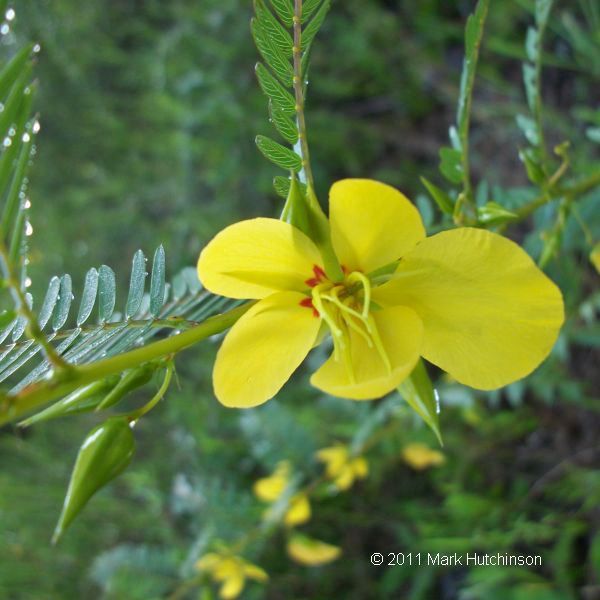FNPS Plant Database
Chamaecrista fasciculata
Nomenclature
Common Name:
Synonym(s):
Genus species:
Family:
Fabaceae (Leguminosae)
Plant Specifics
Form:
Size:
Life Span:
Long-lived perennial
Flower Color:
Fruit Color:
Phenology:
Noted For:
Landscaping
Recommended Uses:
Considerations:
Availability:
Propagation:
Light:
Moisture Tolerance:
Always Flooded---------------------------------Extremely Dry
□□□□□□□□□□□□□□□□□□□□□□□□■■■■■■■■■■■■■■■□□□
Not wet but not extremely dry -to- Very long very dry periods
Salt Water Flooding Tolerance:
Unknown
Salt Spray/Salty Soil Tolerance:
Some tolerance to salty wind but not direct salt spray
Soil or Other Substrate:
Sand
Soil pH:
Suitable to Grow In:
8A,8B,9A,9B,10A,10B

USDA zones are based on the average annual extreme minimum winter temperature.
Don't know your zone? Click here to search by zip code.
Ecology
Wildlife:
Larval host for cloudless sulfur ( Phoebis senna ), gray hairstreak ( Strymon melinus ), orange sulphur ( Colias eurytheme ), sleepy orange ( Abaeis nicippe ), little yellow ( Eurema lisa ) and ceraunus blue ( Hemiargus ceraunus ) butterflies.
Long-tongued bees are responsible for pollination of the flowers, which includes such visitors as honeybees, bumblebees, long-horned bees (Melissodes spp.), and leaf-cutting bees ( Megachile spp.). They are attracted to the food pollen of the purple anthers, and are then dusted by the reproductive pollen of the yellow anthers. Two species of bees, Anthophora walshii and Svastra atripes atripes , are oligoleges of Partridge Pea. Sometimes leaf-cutting bees cut off portions of the petals for their brood chambers. The flowers are usually cross-pollinated by insects, but sometimes they are self-pollinating. ( Illinois Wildflowers ).
Petiolar nectaries attract Halictid bees, wasps, flies, and ants). Unusual visitors to the nectaries are velvet ants ( Mutillidae ), which are hairy wingless femal wasps. ( Illinois Wildflowers )
Bee species documented in Florida include Azcgochlora pura, Augochloropsis inetallica, A. sumnptuosa, Dialictzcs coreopsis, D. miniatulus, Megachile brevis pseudobrevis, M mendica, Bolnbz~s impatiens , and Xylocopa micarzs (Deyrup et al. 2002) .
Birds and other wildlife consume seed which is reported to be particularly important for the bobwhite.
Native Habitats:
Natural Range in Florida:
Visit the USF Libraries Atlas of Florida Plants
Comments:
Ethnobotany:
General Comments:
Citations:
Haehle, Robert G. and Joan Brookwell. 1999. Native Florida Plants. Gulf Publishing Company. Houston, TX.
Huegel, C. https://hawthornhillwildflowers.blogspot.com/2019/09/partridge-pea-chamaecrista-fasciculata.html
Huegel, Craig, N. 2012. Native wildflowers and other ground covers for Florida landscapes. University Press of Florida, Gainesville, FL.
Illinois Wildflowers.
Minno, Marc and Maria Minno. 1999. Florida butterfly gardening. University Press of Florida, Gainesville.
Osorio, Rufino. 2001. A gardener's guide to Florida's native Plants. University Press of Florida, Gainesville, FL.
Tras, Pamela. 2001. Gardening for Florida's butterflies. Great Outdoors Publishing, St. Petersburg, FL.












